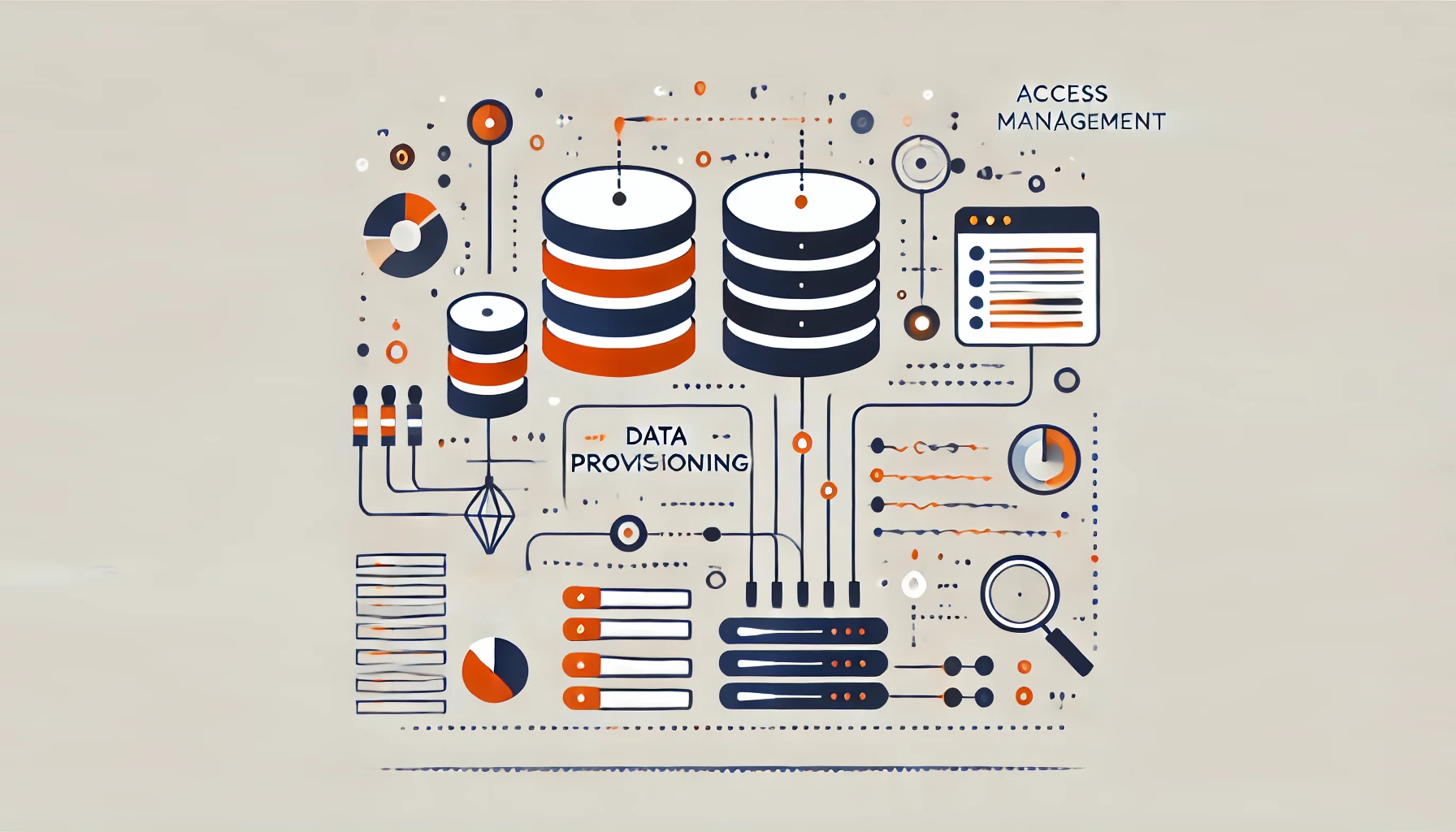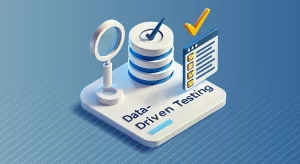
Data Provisioning

What is Data Provisioning?
Data provisioning is the process of making data available to users and applications in a timely and efficient manner. Source systems transfer data to data warehouses, data marts, or operational data stores. This process involves moving information from one location to another. It aims to deliver the right data to the right place at the right time.
Provisioning is a critical aspect of data management in organizations. It enables users to access the data they need to make informed decisions, analyze, and generate reports. Without it, organizations may struggle to leverage their data assets fully.
Data provisioning also plays a crucial role in ensuring data consistency and quality across different systems. By automating the process and setting up proper pipelines, organizations can ensure that the data is accurate, up-to-date, and aligned with the needs of the users. This streamlined flow of information is vital for enabling business intelligence, improving operational efficiency, and driving data-driven decision-making.
Key Concepts in Data Provisioning
To understand provisioning, it’s essential to grasp some key concepts:
- Data sources: These are the systems or databases from which data is extracted for provisioning. Examples include transactional databases, web logs, and social media feeds.
- Data targets: Users upload the supplied data to these systems or databases. Common targets include data warehouses, data marts, and operational data stores.
- ETL processes: ETL is an acronym for extraction, transformation, and loading. It refers to the steps involved in moving data from source systems to target systems. During ETL, the system takes data from sources, changes it to match the target system, and then puts it into the target.
- Data quality: Poor quality data can lead to incorrect insights and decisions. Provisioning workflows often include data quality checks and cleansing processes.
- Data governance: Data governance establishes policies, procedures, and standards for managing an organization’s data assets. It ensures that data is consistent, reliable, and used appropriately. Provisioning processes should align with an organization’s data governance framework.
Data Provisioning Tools
Various tools and technologies are used to support:
- ETL tools: ETL tools automate the extraction, transformation, and loading of data. Popular ETL tools include Informatica PowerCenter, IBM InfoSphere DataStage, and Microsoft SQL Server Integration Services (SSIS). You can use Informatica PowerCenter to create a workflow. This workflow can extract data from one database, transform it, and load it into another database.
- Data integration platforms: Data integration platforms provide a unified environment for managing data across multiple systems. They often include capabilities for provisioning, data quality management, and data governance. Examples include Talend Data Fabric and SAP Data Services.
- Cloud-based data provisioning services: Cloud providers offer managed services that handle the infrastructure and management. This allows organizations to focus on using the data.
Data Provisioning in Software Development
Data provisioning is also relevant in software development, particularly in the context of test data management. When developing and testing software applications, it’s important to have realistic and representative test data. Companies use these techniques to create and manage test data sets.

One approach to test provisioning is to create synthetic data. A program generates synthetic data based on predefined rules and patterns. It mimics the structure and characteristics of real data without containing sensitive or personally identifiable information. Tools like Tonic.ai and Genrocket specialize in generating synthetic test data.
Another approach is to subset and mask production data. This involves extracting a subset of real data from production databases and applying masking techniques to obfuscate sensitive information. You can use data masking tools like Delphix and IBM InfoSphere Optim for this purpose.
For instance, think about testing a healthcare application with patient data. Instead of using actual patient information, you can create fake data with realistic names, addresses, and medical histories. You can substitute real patient names with pseudonyms in production data without altering the data structure or associations.
Best Practices for Data Provisioning
To ensure effective provisioning, consider the following best practices:
- Define clear requirements: Clearly define the data requirements for each target system. Specify the data sources, transformations, and load frequencies needed to meet business needs.
- Ensure data quality: Implement data quality checks and cleansing processes in your data provisioning workflows. Validate data at each stage of the ETL process to catch and correct errors early.
- Optimize performance: Design your processes to be efficient and performant. Use techniques like parallel processing, partitioning, and indexing to improve ETL performance.
- Implement data governance: Ensure that your processes align with your organization’s data governance framework. Follow established policies and standards for data management and security.
- Monitor and maintain: Regularly monitor your processes to ensure they are running smoothly. Set up alerts for failures and anomalies. Perform routine maintenance tasks like database optimization and archiving.
Data Provisioning Challenges
While provisioning is essential for making data accessible and usable, it comes with its own set of challenges. Some common challenges include:
- Data quality issues: Managing data from various sources can make it difficult to maintain data quality. Data quality issues such as inconsistencies, duplicates, and missing values can impact the reliability and usefulness of the data.
- Data security and privacy: Provisioning data often involves sensitive or personally identifiable information (PII). Ensuring the security and privacy of this data throughout the provisioning process is crucial. Organizations must implement appropriate access controls, encryption, and data masking techniques to protect sensitive data.
- Data integration complexities: Combining data from different sources can be difficult when they have different formats, structures, and meanings. Resolving data integration issues requires careful mapping and transformation of data to ensure compatibility and consistency.
- Performance and scalability: As data volumes grow, provisioning processes can become resource-intensive and time-consuming. Ensuring the performance and scalability is essential to handle increasing data demands. This may involve optimizing ETL processes, leveraging parallel processing, and using distributed computing frameworks.
- Metadata management: Managing metadata is critical for understanding the context, lineage, and quality of provisioned data. Capturing and maintaining accurate metadata throughout the provisioning lifecycle can be challenging, especially in complex data environments with multiple systems and stakeholders.
To address these challenges, organizations need to invest in robust frameworks, tools, and practices. This includes implementing data quality checks, data security measures, data integration strategies, performance optimization techniques, and metadata management solutions.
Future Trends
As data continues to grow in volume, variety, and velocity, provisioning practices are evolving to keep pace. Here are some future trends:
- Cloud-native provisioning: With the increasing adoption of cloud computing, provisioning is shifting towards cloud-native architectures. Cloud platforms offer scalable and elastic infrastructure, managed services, and serverless computing capabilities. Cloud-native ETL tools and data integration platforms are becoming more prevalent, enabling organizations to provision data seamlessly across cloud and on-premises environments.
- DataOps: DataOps is an emerging approach that applies DevOps principles to data management and provisioning. It emphasizes collaboration, automation, and continuous delivery of high-quality data. DataOps practices aim to streamline provisioning workflows, improve data quality, and accelerate data delivery to consumers. By adopting DataOps, organizations can enhance the agility and reliability of their provisioning processes.
- Real-time provisioning: Businesses need real-time data as they rely more on data for decision-making. Organizations are augmenting traditional batch-oriented ETL processes with stream processing and change data capture (CDC) techniques. These methods help quickly provide data, so organizations can make decisions using the most current information available.
- Self-service provisioning: Self-service provisioning lets business users access and control data without IT assistance. Platforms offer easy-to-use interfaces and connectors for extracting, transforming, and loading data. This trend supports data democratization and speeds up data access for business users.
- AI-driven provisioning: Organizations use AI and ML techniques to automate and optimize provisioning processes. AI-driven provisioning can intelligently profile data, detect anomalies, suggest transformations, and optimize ETL workflows. By leveraging AI and ML, organizations can improve the efficiency and accuracy of provisioning while reducing manual effort.
As trends change, organizations must update their data strategies and use new tools and technologies to stay competitive. To succeed in the future of provisioning, you should embrace cloud-native architectures.
Conclusion
Data provisioning is a vital process that enables organizations to make their data accessible and usable for various purposes. It is getting data from source systems to data warehouses by extracting, transforming, and loading it. This process sets the stage for analyzing data and making decisions.
Effective provisioning requires a combination of tools, processes, and best practices. ETL tools, data integration platforms, and cloud-based services provide the technological capabilities for provisioning. Defining clear requirements, ensuring data quality, optimizing performance, implementing governance, and monitoring processes are key to success.
Organizations depend on data for their operations and strategies, making provisioning increasingly important for their growth and success. Improving data capabilities helps organizations make the most of their data and stay ahead.
